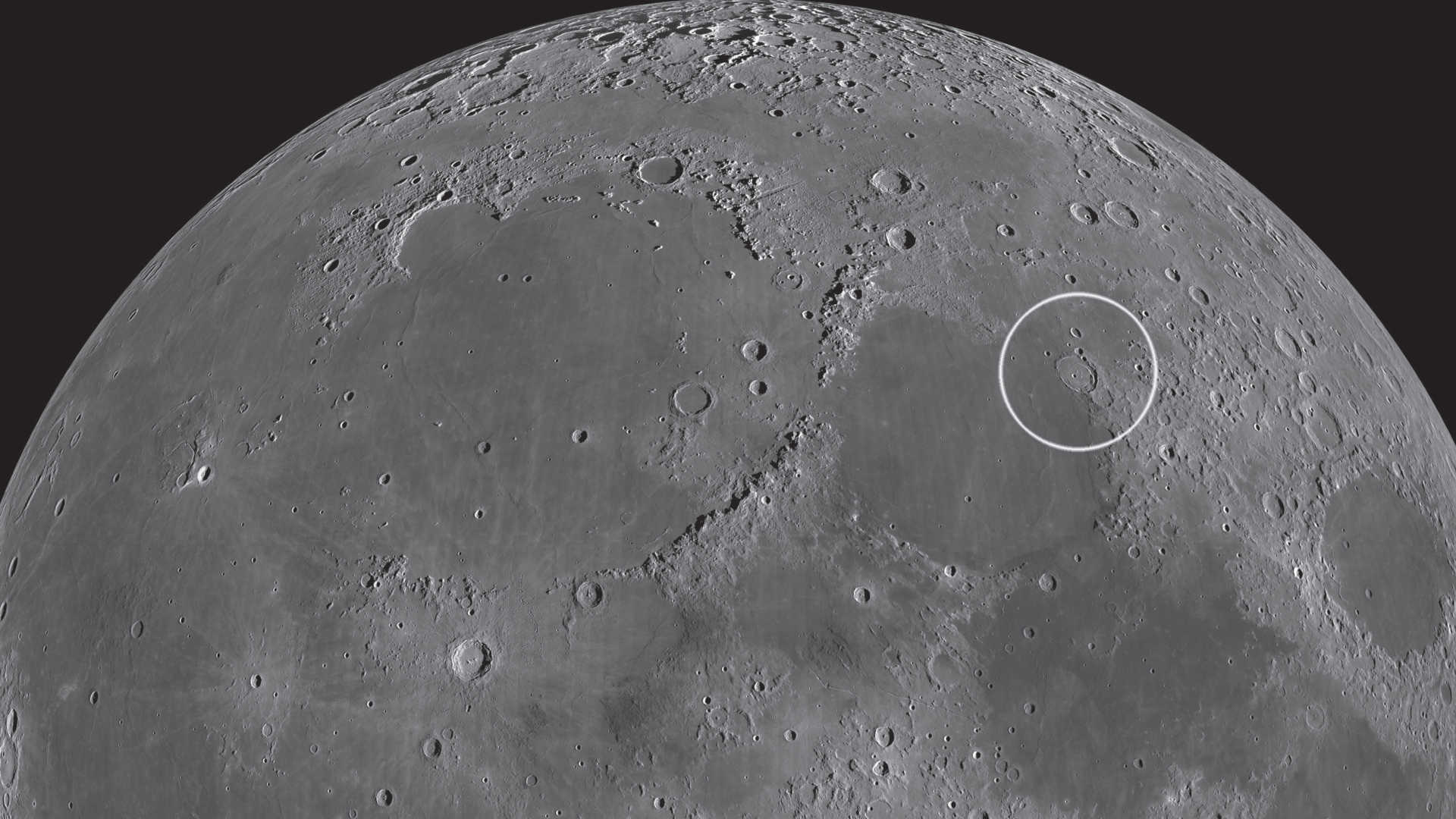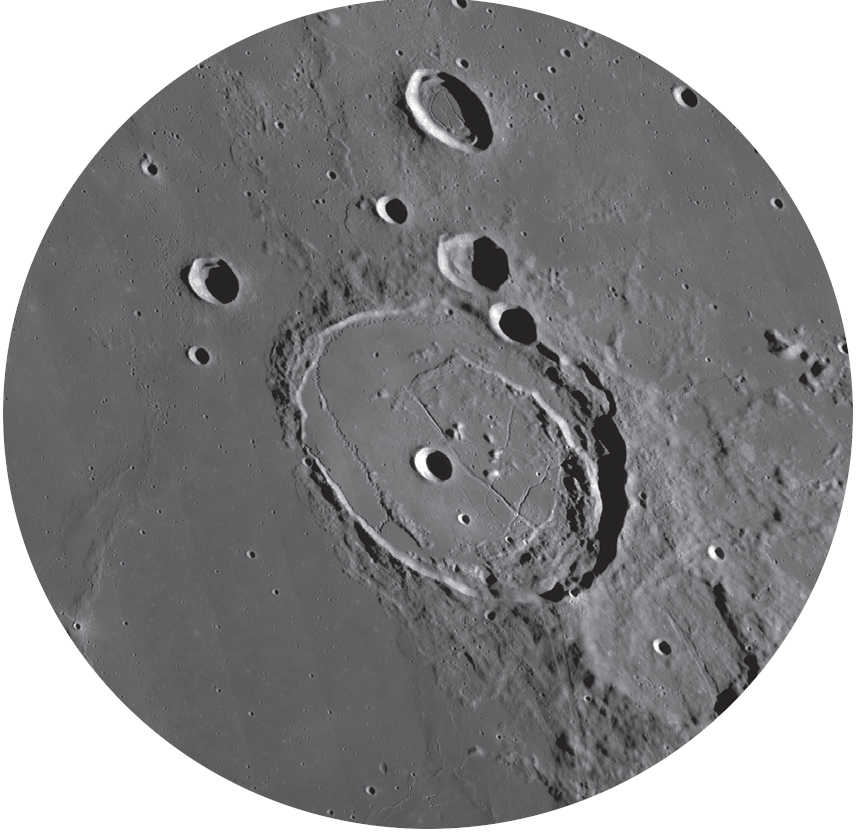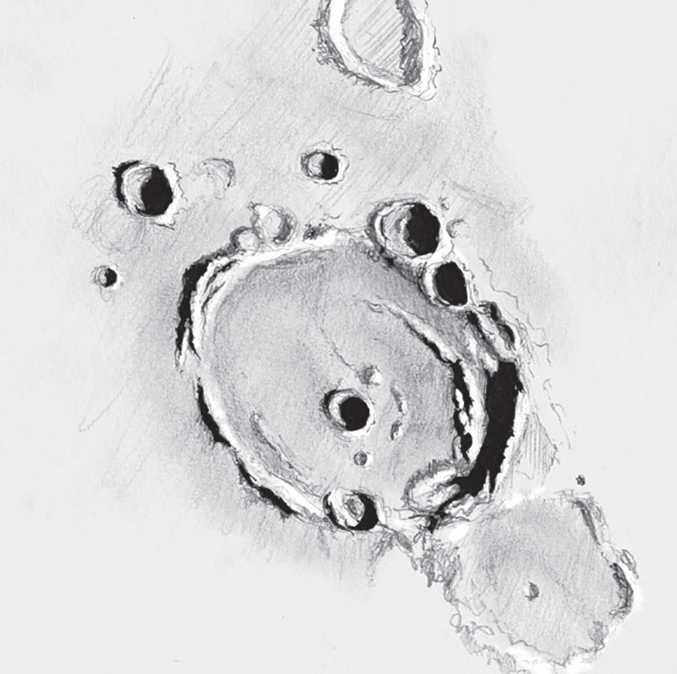Impact at the ocean’s edge
One of the Moon’s most noteworthy observation targets is the large impact crater Posidonius on the edge of Mare Serenitatis.
 Posidonius is located right on the edge of Mare Serenitatis. NASA/GSFC/Arizona State University
Posidonius is located right on the edge of Mare Serenitatis. NASA/GSFC/Arizona State UniversityOne of the Moon’s most noteworthy observation targets is the large impact crater Posidonius. Located on the edge of Mare Serenitatis (Sea of Serenity), the 100 km wide formation can be seen in all its splendour at the terminator five days after New Moon and invites you to explore the area around it more extensively.
Crater inside a crater
 Posidonius’ wall has been severely eroded. NASA/GSFC/Arizona State University
Posidonius’ wall has been severely eroded. NASA/GSFC/Arizona State UniversityThe crater, which is estimated to be 3.5 billion years old, has been completely inundated with lava and looks like a flat bowl. Posidonius’ wall is heavily eroded and becomes flatter in the west towards Mare Serenitatis. At one location it is almost completely broken away, providing a small passage to the adjacent lunar mare. Inside the impact crater are two smaller inner craters: the circular 11 km wide Posidonius A can be seen just west of the centre of Posidonius, and the 2 km wide small crater Posidonius C. This can be found south-east of Posidonius A with a telescope with a medium aperture.
This crater also has a small but distinct corona, which is visible against the dark basalt terrain. A visit at full Moon is definitely worthwhile.
Spirals and rilles
 Drawing of Posidonius: a mountain range that runs in a slightly spiral shape into the interior of the crater is especially striking. Serge Vieillard
Drawing of Posidonius: a mountain range that runs in a slightly spiral shape into the interior of the crater is especially striking. Serge VieillardAnother striking feature is a mountain range inside the impact crater. These low mountains begin in the south of Posidonius directly by the adjacent crater Chacornac and then run in a slightly spiral shape, getting progressively flatter, over the lava-flooded crater floor. This structure is clearly visible even in a telescope with a small aperture. Presumably, the mountain range was created by flow erosion of the wall. The spiral encloses the remnants of the former central peaks, which consists only of a few low hills.
Posidonius’ next highlight is its complex rille system. The main rille, running across the middle of the impact crater in a north-west/south-east direction, is visible through a telescope with a medium aperture.
Best visibility 5 or 18 days after New Moon
Author: Lambert Spix / Licence: Oculum-Verlag GmbH
